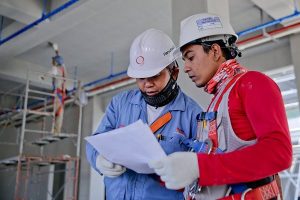Utility locating is a useful service to minimize the risk of anything dangerous happening on a construction site. It also allows workers to maximize their efficiency because they won’t have to worry about running into any obstructions below the surface if they need to dig underground.
However, there are some misunderstandings about what utility locating offers. Here are the most common misunderstandings people have about utility locating.
“Private Utility Locators Will Mark All Utilities.”
While utility locating services will do what they can to mark all of the relevant utilities, there are limitations on ground penetrating radar (GPR) technology that inhibit its ability to locate all underground obstructions. While you’ll be safer on the job, you still need to be leery when you perform underground work.
“Once a Utility Locating Service is Contacted, All I Have to Do Is Wait.”
If your site is complex, like most are, you can’t just wait for your locating services to arrive. You have to remove whatever obstructions you can, including any piles of construction materials and parked cars. Getting a hold of utility maps or records is also appreciated to make the locating process easier.
“Utility Mark Out is Accurate.”
A mark out isn’t always based on precise locating. Sometimes, a mark out gets made purely on records, which doesn’t always lead to the most accurate results. While you can often get accurate information, it doesn’t mean this formula is perfect, so you still have to recognize and account for the limitations that utility locating technology has.
“Ground Penetrating Radar Can Find All of My Underground Utilities.”
Ground-penetrating radar helps find underground utilities that aren’t too far beneath the surface, but once obstructions are too deep to be detected, GPR stops working. Along with this, GPR sometimes doesn’t interpret data perfectly, depending on the conditions that are happening beneath the surface.
“After Utility Locating is Finished, I Don’t Have to Do It Anymore.”
There are many factors to consider when thinking about the results of utility locating, and some of these factors can change over time. These include changes in soil condition and access to any surrounding utility rooms. Since conditions can change over time, it’s up to you to keep up-to-date on these changes. If you find any new information regarding your underground utilities or if the scope of your ground-intrusive work changes, it’s in your best interest to conduct utility locating again.
Concrete Visions Will Get The Job Done Right
Concrete Visions has been working with clients for over 25 years. Our G&M Services installers are certified with the industry’s major firestop product manufacturers. As part of our firestop service, we can assess abnormal field conditions and, with the manufacturer’s technical support assistance, provide engineering judgments in a timely fashion to comply with contract specifications. Our Field Mechanics undergo ongoing training, including mandatory monthly safety meetings, weekly Toolbox Talks where safety and equipment information is shred, and trainings on safe work standards and safety best practices.

